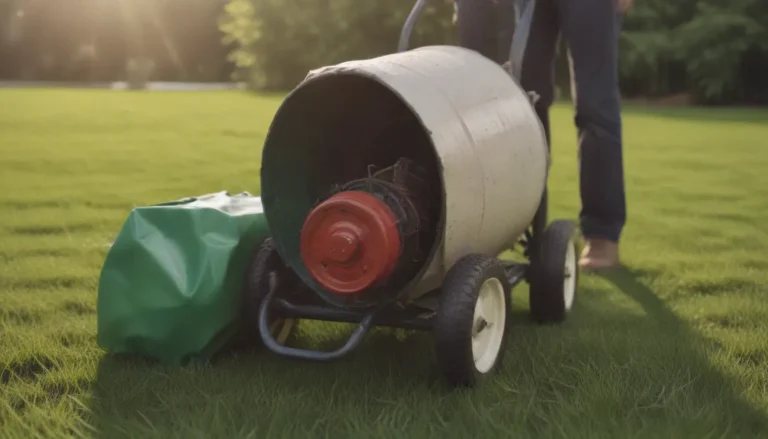A Comprehensive Guide on How to Grow Sweet Potatoes

Are you interested in growing your own sweet potatoes but not sure where to begin? Look no further! In this in-depth guide, we will walk you through the process of growing sweet potatoes, from planting to harvesting. Sweet potatoes are a delicious and nutritious addition to any garden, and with a little bit of knowledge, you can successfully grow your own crop. Let’s dive in and learn how to grow sweet potatoes step by step.
What are Sweet Potatoes and How are They Different from Regular Potatoes?
Before we delve into the details of growing sweet potatoes, let’s first understand what makes them unique. Sweet potatoes are not related to regular potatoes and are grown differently. While regular potatoes can be planted whole in the ground, sweet potatoes are grown from sweet potato slips. These slips are the stems and foliage that sprout from already grown sweet potatoes. By twisting them off the potato, rooting them in water, and then planting them, you can grow your own sweet potatoes. Keep in mind that sweet potatoes are always planted in the spring and require warm temperatures to develop full-size tubers. Unlike regular potatoes, you can usually get three to five tubers per plant, more in warmer climates. Additionally, sweet potatoes come in various colors, including orange, white, yellow, and even purple.
How to Plant Sweet Potatoes
When to Plant
Sweet potatoes are tropical plants, so it’s best to wait until the soil has fully warmed up in the spring before planting. To give them a head start, consider planting sweet potatoes in raised rows, about 8 inches high. This helps the soil warm faster and keeps it well-drained. If you’re gardening in a cooler climate, spreading black plastic on the soil can also help it warm up faster.
Selecting a Planting Site
Sweet potatoes thrive in any average, well-drained soil in a sunny location. If your soil is too dense or rocky, consider planting sweet potatoes in raised beds filled with sandy yet rich potting soil.
Spacing, Depth, and Support
Plant sweet potato slips about 12 to 18 inches apart with 3 to 4 feet between rows. Since the vines will spread, make sure to give them plenty of room to grow.
Sweet Potato Care
Light
Plant your sweet potatoes in full sun to part shade. They generally prefer full sun but appreciate some afternoon shade in hot, dry regions.
Soil
Sweet potatoes prefer well-drained soil that is high in organic matter. Sandy soil is preferable to dense, clay soil.
Water
Once established, sweet potatoes can tolerate dry soil. Keep the soil evenly moist by giving it about 1 inch of water once a week. Avoid watering your sweet potatoes during the final three to four weeks prior to harvest to prevent the mature tubers from splitting.
Temperature and Humidity
Sweet potatoes should not be planted outdoors until the soil temperature reaches 60 degrees Fahrenheit. They require soil growing temperatures between 60 to 85 degrees Fahrenheit and air growing temperatures of 65 to 95 degrees Fahrenheit. Choose short-season varieties if you live in the northern part of the country.
Fertilizer
Sweet potatoes are not heavy feeders but benefit from proper soil preparation. Add compost to the beds before planting or apply an organic liquid fertilizer to the soil prior to planting. Avoid overfeeding, as it may promote foliage growth rather than tuber development.
Types of Sweet Potatoes
When choosing varieties of sweet potatoes to grow, consider options such as ‘Beauregard,’ ‘Bush Porto Rico,’ ‘Centennial,’ ‘Georgia Jet,’ and ‘Patriot.’ Each variety has its own unique characteristics and flavor profiles.
Harvesting Sweet Potatoes
After about three to four months of planting, your sweet potato tubers should be ready to harvest. Be sure to leave enough leaves on the plant to keep it growing. You can dig up your tubers once the foliage starts to yellow. Avoid letting the tubers sit in the ground too long after the tops die back to prevent rotting. Harvest gently, as sweet potato tubers grow close to the surface and have tender skins that can be easily damaged.
How to Grow Sweet Potatoes in Containers
If you’re limited on space or want to experiment with container gardening, you can grow sweet potatoes in containers. Start with small plants purchased in the spring or grow slips in pots. Use a large container with plenty of drainage holes filled with high-quality potting soil. Water thoroughly and place the container in a sunny spot. Water at least once a week unless it rains, and avoid overwatering to prevent rot.
Propagating and Overwintering Sweet Potatoes
You can propagate sweet potatoes using slips or by saving tubers for replanting. To overwinter sweet potatoes, cut the vines before the first fall frost, carefully dig up the tubers, brush off the soil, and store them in a cool, dry place. Avoid exposing the tubers to light, as it can cause them to sprout prematurely.
Common Pests and Plant Diseases
When growing sweet potatoes, watch out for wireworms, root-knot nematodes, and mice. Rotating your crops annually and choosing disease-resistant varieties can help prevent common pests and diseases. Additionally, using certified disease-free sweet potato slips is key to a successful harvest.
In conclusion, growing sweet potatoes can be a rewarding experience with the right knowledge and care. By following these steps and tips, you can successfully grow your own sweet potatoes at home. Experiment with different varieties, planting methods, and care techniques to find what works best for your garden. Happy growing!
“Sweet potatoes are surprisingly easy to grow, since the vines root wherever they touch the ground, a few plants can easily produce a generous harvest.”
Citation: University of Georgia Extension, Sweet Potato Production and Pest Management in Georgia.





